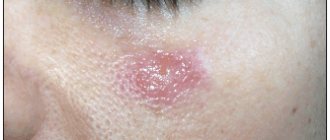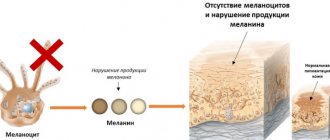Papilloma is a growth on the skin or mucous membrane. Their formation is associated with the human papillomavirus (HPV). Such formations are classified as benign. But there is a risk that in the future they will transform into malignant ones. This disease is widespread and chronic with relapses. There are many different strains of HPV known. They lead to formations of different sizes, shapes, and colors. Papillomas do not hurt or itch, but if placed poorly they cause discomfort or rub.
Are you worried about papillomas on your body? Laser No. 1 for removing papillomas!
Causes of papillomas
The main reason for the occurrence of papillomas on the body is the penetration of a virus into the body. This is often associated with unprotected sexual intercourse. Less commonly, microorganisms enter through small wounds on the skin, during childbirth from mother to baby, as well as during cosmetic procedures and operations. It can take a couple of years from the moment the virus enters the body until formations appear. The fact is that its activity increases greatly when the immune system is weakened.
The rapid growth rate of viral formations may be associated with the following factors:
- Metabolic disorder.
- Chronic gastrointestinal diseases.
- Diseases of the endocrine system.
- Drinking large quantities of alcohol, drugs, smoking.
The development of papillomas can occur in any part of the body, even on the mucous membrane.
Possible methods of infection with HPV
The virus remains viable in the environment. Transmission of infection occurs from a carrier to a healthy person in the following ways:
- during sexual intercourse;
- through household means (through personal hygiene items);
- in bathhouses, saunas, gyms when common items are infected;
- from mother to child during childbirth;
- self-infection - during hygiene procedures or in places of friction.
The risk of infection and degeneration of papillomas into malignant formations increases with decreased immunity. Factors that increase the risk of infection are:
- early onset of sexual activity, different partners;
- the presence of urogenital infections (chlamydia, trichomoniasis, bacterial vaginosis, HIV, etc.);
- local irritating mucous discharge in the genital area;
- dysbiotic conditions;
- bad habits.
Depending on the type of virus and the state of immunity, the rate of spread of infection varies. Some types of papillomas may not manifest themselves for years. It is better to remove condylomas immediately - they almost always degenerate into malignant formations.
Types of papillomas
The most common types of skin formations are:
Regular or vulgar
This is a large papule. At first it is small, as it grows its surface becomes rough. Papilloma does not differ in color from healthy tissue. Several small ones often appear around one wart.
Chords
Papillomas in the form of threads. First, a yellow compaction appears on the skin, which stretches out and acquires a thin stalk. It often forms in the area of the eyelids, neck, and chest.
Flat
Such seals protrude slightly above the body. Outwardly they resemble moles, but are denser in structure. Can form in groups in the genital area, back, anal area
Condylomas
In most cases, a number of papillomas appear in one place, which grow and take on the shape of a “cauliflower”. Locations: labia, vagina, penis.
Warts on the sole
Their main part grows inside tissues and nerve endings, which causes discomfort. The papilloma looks flat and yellow.
Most often, papillomas that are located on the mucous membrane are oncogenic in nature. In any case, if they occur, it is better to consult a specialist.
HPV in women
HPV in women manifests itself not only as papillomas on the body, but also causes the development of cervical erosion , precancerous conditions, and cervical cancer . Condyloma in women is quite difficult to detect; it can exist in a woman’s body for a long time without any symptoms, and is discovered purely by chance at an appointment with a gynecologist. That’s why it’s so important to visit a specialist regularly, once every six months!
Symptoms of condyloma include:
- genital warts, which can appear on the genitals (condyloma on the labia, vaginal condyloma, cervical condyloma), in the oral cavity, on the skin of the anus (anal condyloma);
- disturbance in the maturation of epithelial cells (there are 3 stages of the process, the third stage is precancer);
- the development of a malignant formation from the epithelium lining the cervix.
Papillomas on the body
Papillomas on the body can occur in the body in various forms. Their size ranges from 1 mm to several centimeters. The rashes can be single or multiple, the color ranges from white to brown.
There are three forms of manifestation of HPV:
- Clinical – papillomas, condylomas, flat formations, warts appear on the skin.
- Subclinical - the appearance of rashes that are not noticeable during a medical examination.
- Latent – there are no symptoms or manifestations. To make a diagnosis, scraping of the epithelium is necessary.
VRF is insidious. Some papillomas can develop into malignant tumors.
Cost of services
| Code | Name of service | Price |
| 1101 | Removal of benign formations (up to 5 mm in diameter) of the skin using a laser or radio wave method for 1 unit. | 650 rub. |
| 1102 | Removal of benign formations (up to 5 mm in diameter) of the skin using a laser or radio wave method up to 5 units. | 2500 rub. |
| 1103 | Removal of benign formations (up to 5 mm in diameter) of the skin using a laser or radio wave method up to 10 units. | 4000 rub |
| 1104 | Removal of benign formations (up to 5 mm in diameter) of the skin using a laser or radio wave method up to 20 units. | 5000 rub |
| 1105 | Removal of benign formations (up to 5 mm in diameter) of the skin using a laser or radio wave method up to 30 units. | 6000 rub |
| 1106 | Removal of benign formations (up to 5 mm in diameter) of the skin using a laser or radio wave method up to 40 units. | 7000 rub. |
| 1107 | Removal of benign formations (up to 5 mm in diameter) of the skin using a laser or radio wave method up to 50 units. | 7500 rub. |
Papillomas on the neck
We are accustomed to calling small nodules with a thin stalk on the neck warts, although in fact they are filiform papillomas. These formations are not life-threatening, but many people want to remove them.
Before removing a papilloma on the neck, you need to make sure that it is not a mole or other skin formation. Its characteristic features:
- The shape of a grain attached to the skin by thin threads, up to 2 mm long.
- Shade - from yellow to brown.
- They can be single (lower on the neck) or grouped up to ten pieces.
- In addition to the neck, papillomas appear on the face, eyelids, cheeks, and around the lips.
Papillomas on the neck appear due to a specific virus that penetrates in different ways - through contact with the skin, transfer to the fingertips.
Papillomatosis in the throat
There is also papillomatosis of the respiratory tract, when the tissue lining the nasopharynx begins to grow from the nose to the lungs, also often affecting the larynx. This is also one of the types of disease caused by the papilloma virus; the formations in this case are considered benign. SM-Clinic doctors are good at diagnosing this type of HPV and successfully treating it, while the disease is not always recognized by local or ENT doctors, who at best shrug their shoulders and prescribe rinses.
Papillomas on the eye
Papillomas can form on the upper and lower eyelids due to the penetration of the papillomavirus. For a long time, the disease may not manifest itself in any way, but its progression can even lead to deterioration of vision. Pathology can take two forms:
- Keratomas are elongated tuberous growths.
- Fibropapillomas are flat formations of various shapes.
Removal of eyelid papilloma is not carried out using a laser; a more preferable option is electrocoagulation.
Preparation and carrying out laser removal
Laser removal is preceded by a thorough examination and examination of the tumor. The doctor must be sure of its benign quality; in case of any doubts and the borderline state of the cells, laser technology is not used, but a surgical operation is performed.
During the procedure, under the influence of a laser, heating and layer-by-layer destruction of neoplasm cells occur, so it is impossible to take biological material for subsequent research. Additionally, the doctor surveys the patient about possible contraindications to the procedure, and also conducts a number of studies (blood tests).
No special preparation is required for the procedure. At the appointed time, the patient comes to the specialist, the operation includes the following stages:
- Disinfection of the surgical field.
- Conducting anesthesia (if necessary). For this, an injection, gel or spray is used.
- Installation of the device to the required laser length.
- Layer-by-layer evaporation of the neoplasm.
- Treat with an antiseptic and apply a bandage if necessary.
To avoid relapse of the disease, it is necessary to carry out antiviral therapy, as well as take immunomodulating and immunostimulating drugs to strengthen the immune system.
Papillomas in intimate places
In intimate parts of the body, papillomas often appear not one at a time, but several at once, resembling cauliflower. The most popular localization locations:
- pubis,
- groin and perineum,
- scrotum and penis,
- cervix, vaginal mucosa.
In women, papillomas located on the mucous membrane of the vagina or cervix often cause discomfort - itching, pain, bleeding after sexual intercourse, and unpleasant discharge.
Diagnosis: which doctor to contact
The examination is prescribed by a dermatovenerologist after a visual examination in a number of cases:
- the presence of papillomas on the skin or mucous membranes (or their presence in a sexual partner);
- pregnancy planning;
- infertility or unsuccessful pregnancies in the past.
The very fact of detecting a virus is not decisive - it is much more important to identify its type and degree of oncogenicity.
The following methods are used for diagnosis:
- colposcopic examination - examination using a special microscope of the cervix and vagina;
- cytological examination - taking a smear, has low accuracy; if the result is poor, additional analysis is carried out;
- histological examination of a biopsy specimen - sampling of a small fragment of tissue for analysis;
- PCR (polymerase chain reaction) - the material for the study is a smear, urine or blood, the accuracy is close to 100%.
PCR is most often used in specialized clinics. The accuracy of the result depends on compliance with the research technique. Such analysis is best done in laboratories with strict compliance with standards.
How to remove papilloma (methods)
In cosmetology, there are several methods for getting rid of papillomas in different locations:
- Surgical intervention - recently the technique is losing relevance because it is traumatic.
- Cryodestruction is the removal of tumors using liquid nitrogen.
- Laser removal is the safest and most modern method. Eliminates papillomas without the risk of relapse.
- Electrocoagulation - the procedure is carried out using electric current.
- Radio wave radiation. This technology is similar to laser removal. It not only removes the growth, but also glues the walls of the blood vessels to reduce the rehabilitation period.
Laser removal of papillomas is considered the most popular and safest today.
What is needed to undergo treatment?
Today, there are several ways to remove papillomas and other formations on the skin and mucous membranes, but the laser method is superior to all these methods in terms of efficiency. The specialists of Dr. Novikov’s center have been successfully working in the field of laser medicine and cosmetology for many years. The procedure for removing papillomas in Moscow in our center is carried out on an outpatient basis. We remove papillomas in both men and women on any part of the body as effectively as possible. You can make an appointment with our specialists by calling +7, or use the convenient feedback form.
Folk remedies for removing papillomas
There are several options for how to remove papillomas at home:
- Cauterize them with celandine juice.
- Apply tea tree oil to the formations every day.
- Make compresses with aloe vera gel. The substance is applied to gauze, which is then applied to the papilloma. Such compresses need to be changed every three hours.
- Constantly wipe the papilloma with a banana peel.
You can use folk remedies only if we are dealing with ordinary papilloma. If it bleeds, causes discomfort or other abnormalities, you should consult a doctor as soon as possible.
Nowadays, there are many methods to remove papilloma. But this does not solve the problem of impaired immune system and metabolism. It is necessary to undergo a full examination to determine the causes of growths and undergo full therapy.
Who is at risk of getting the papilloma virus?
Papillomas and condylomas can appear, disappear and appear again, because they are manifestations of a viral infection, and their presence depends on the state of the body’s defenses at the moment, that is, immunity. Infection is most likely among smokers and alcoholics, and among those who are indiscriminate in sexual relations.
Women who use oral contraceptives (COCs) for a long time are also at risk of contracting the virus. The carrier of the virus can be both old and young. It is enough for your body to experience internal stress of various origins: you have had the flu or ARVI, gastrointestinal problems have worsened, your body cannot cope with long-term medication use - and here you have a weakened immune system, and with it the papillomavirus.
It is enough to be in close contact or live next to a person carrying the virus, take a swim in a “dirty” pool or shower in a public bath, or just walk along the beach - and if your immune system fails, the virus will invade your life. The papillomavirus “loves” heat and high humidity, when your skin is not protected by clothing. He immediately finds refuge on your heated skin.
How to get rid of papillomas on the face: professional techniques
Treatment of all skin tumors begins with a patient interview. It is important for the doctor to find out when the growth appeared, whether it bothers you, and whether its size and shape have changed. This is followed by a visual examination and dermatoscopy - the study of papilloma through the already mentioned dermatoscope. After this, the doctor issues a conclusion about what type of tumor we are dealing with and prescribes the optimal method for its removal.
“To treat papillomas, cytostatics, cryo-laser, diathermocoagulation and electrical destruction are used,” says Anna Torosyan. — Some medicinal formulations that contain, for example, celandine or castor oil, can be effective in the treatment of papillomas, but the use of these drugs without consultation with a specialist is unacceptable, since self-medication can lead to aggravation of the problem. Convex papillomas require immediate removal, especially if they are located on the face. This is due to the high probability of injury to the formation, which can trigger the onset of the inflammatory process and the spread of pathology to nearby areas of the skin.” In some cases, trauma can stimulate the development of cancer.
“Today, the safest and most reliable method of removing papillomas is radio wave,” says Maria Istomina. “Here they use a special device designed specifically for radio wave surgery - a unique non-contact technique for cutting soft tissue using high-frequency radio waves. This occurs due to the heat that tissues emit when high-frequency waves penetrate them. When working with papillomas, this device uses a very thin electrode. A radio wave with a frequency of about 4 MHz is concentrated in it. The papilloma tissue evaporates under its action, the skin does not heat up, and the patient feels practically nothing. The method is universal, since the device regulates the power and wave shape to remove tumors on any area of the skin. The device burns out the papilloma without pain or discomfort for the patient, and completely - only a small crust remains. The radiosurgery technique completely eliminates painful contractions of muscles or nerve endings, so it is one of the most painless techniques in modern medicine.”
There is also a method of cryodestruction - freezing the tumor with liquid nitrogen. It does not damage the skin, does not cause bleeding, and the procedure itself is quick and painless. Cryodestruction is most often used by specialists to remove papillomas on the face of children.
Histology for removed papilloma is not necessary. The need for this analysis depends on what diagnosis the doctor made when studying the tumor. If during dermatoscopy the doctor has no doubt that he is faced with a benign papilloma, histology can be dispensed with.
Diagnostics
In order to more reliably determine whether the neoplasm belongs to anogenital warts, a test is carried out with a 5% solution of acetic acid, after treatment with which papillomas in intimate places retain a grayish-white color with a changing, intensifying vascular pattern of normal skin. Laboratory tests can also be used in diagnosis - identification of the HPV genotype with a prognosis for the course of the disease.
To diagnose precancerous conditions against the background of papillomas in intimate places in women, consultation with an obstetrician-gynecologist and urologist is recommended when papillomas are localized in intimate places in men, for example, with intraurethral localization. If there are papillomatous processes in the anal area, consultation with a proctologist is recommended.











